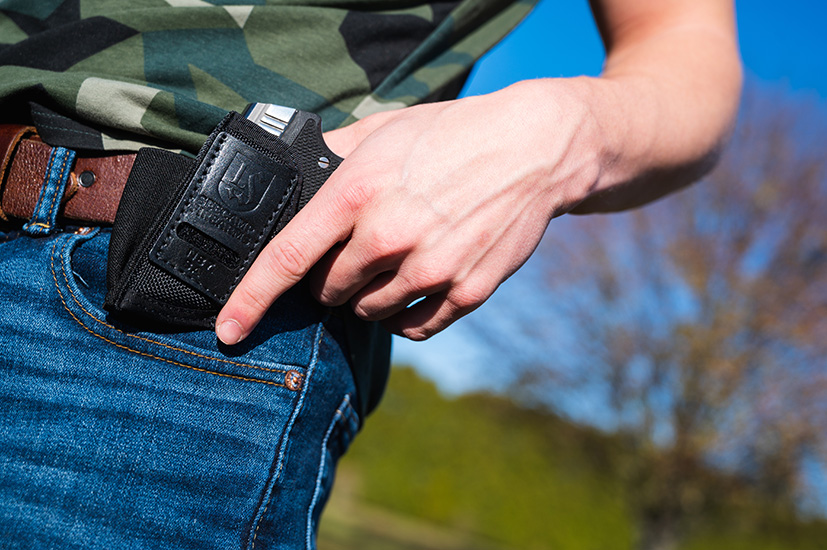Ammunition recommendations

AMMO RECOMMENDATIONS
Because we cannot keep up with the constant addition of new ammo we tell our customers that as long is the round is a caliber appropriate non +P hollow point round that they are safe to utilize it in their firearm. Because of its small size the Seecamp requires a very tight cartridge length requirement to assure proper feeding. Below is a listing by caliber rounds that we have identified as a good high quality fit for a Seecamp and if you are interested a bit more info on “Why Hollow Point Only?”.
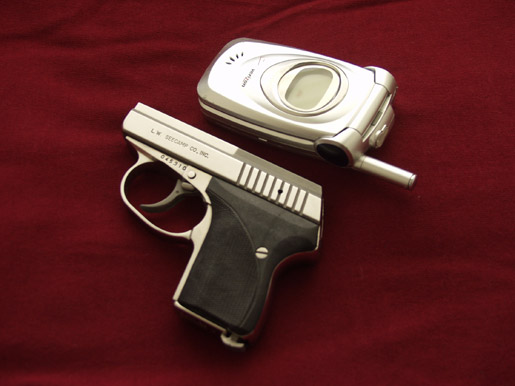
LWS 25
With our LWS-25 you can use anything from hollow points to full metal jacketed rounds. Our only recommendation, however, is to stay away from rounds using aluminum casings. The reason for this is that the soft casing material can lead to galling, which is simply the case scraping against the edges and walls of the chamber and leaving small material deposits behind. This can eventually lead to a significant buildup of material, under sizing your chamber and potentially causing feeding issues.
LWS 32
We recommend the following .32 ammunition in no particular order:
-
-
-
Winchester Silvertip 60gr. HP (**NOT WINCHESTER SUPER X**)
-
PMC Bronze 60gr. JHP
-
Federal Premium Hydra Shok 65gr. JHP
-
Speer Gold Dot 60gr. GDHP
-
-
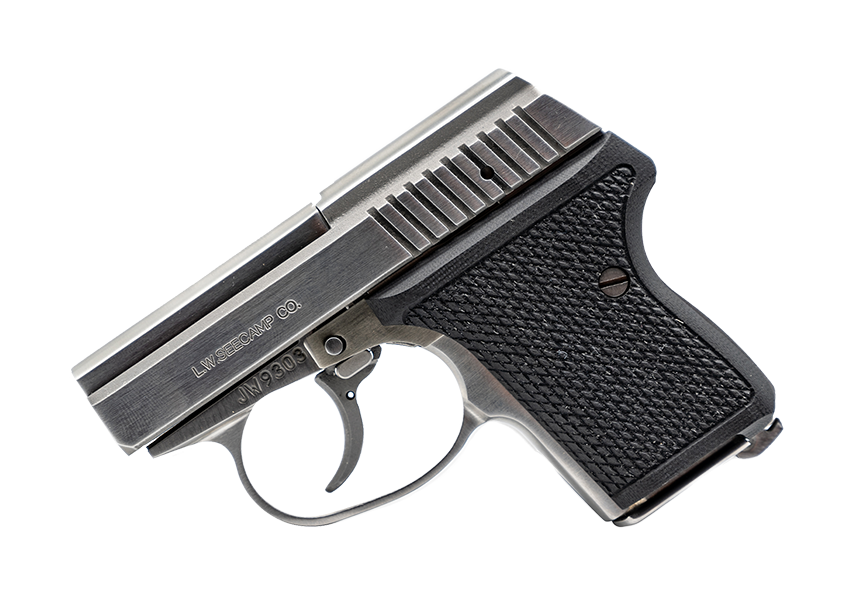
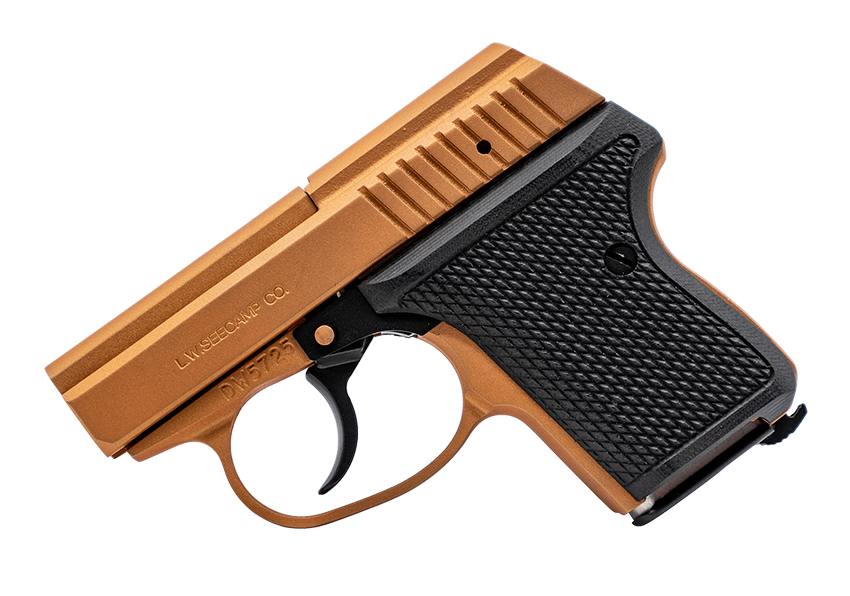
LWS 380
We recommend the following .380 ammunition in no particular order:
-
-
-
Winchester Silvertip 85gr. HP
-
Remington UMC 88GR JHP
-
PMC Gold 95gr. Starfire HP (SFHP)
-
Federal Premium Hydra Shok 90gr. JHP
-
Freedom Munitions X-DEF 95gr. HP
-
-
CAUTIONARY NOTE
It is always good practice to familiarize yourself with a defense pistol by test firing it using ammo for carry from the same lot number you were shooting at the range. Ammunition, even from the same manufacturer varies, otherwise there would be no need for lot numbers. It is better to shoot only 43 from a box and load the last seven for carry than to shoot 200 or even 2,000 and then load for personal protection ammunition from an entirely different production lot. That is about the same as buying two identical guns and test firing one to check out the reliability of the other. Neither approach makes sense.
In the same vein, extra magazines are always nice to have but it should be remembered that shooting 50 rounds each out of two magazines is not the equivalent reliability test of shooting 100 rounds using a single magazine. If you do have more than one magazine, mark them. (Few things are more frustrating than doing a repair for the customer with five magazines who experienced a jam and can’t remember which magazine he was using at the time.)
Magazines should occasionally be cleaned before they become sluggish through fouling. A sluggish magazine invites stovepipes on the last round.
Likewise, a dirty chamber can cause last round stovepipes as the slide tends to speed up when the chamber builds up excessive powder residue, making it more difficult to pick up the last round out of the magazine when the magazine spring is weakest. A cure would be to eliminate one round from the magazine and use a longer magazine spring, which gives the shooter a maximum of six rounds instead of seven but reduces the risk of a final round stovepipe jam because of a badly fouled chamber. I’d rather take a certain six and an almost certain seventh over a certain six and no possibility of a seventh.
Any feedback or personal experiences with .25, .32 or .380 ammunition is much appreciated please email us at: info@seecamp.com
HISTORY AND ADDITIONAL COMMENTS
We’ve recommended the original Winchester Silvertips since we first introduced the LWS 32 back in 1985. At the time there was simply no market for the few oversized .32 caliber pistols still being made. As a result, ammo choices were very limited. What once was an acceptable police and military cartridge was well on the road to becoming a novelty round in the USA used only by gun collectors shooting surplus ammunition on a Sunday afternoon. Pistols in .32ACP were becoming obsolete weapons because of their disproportionate size to caliber ratio and the increase in the number of criminals shooting back who were punching bigger holes.
.32ACP pistols were once used extensively by police and military in countries like Spain, Belgium, France, Finland, Germany and the USA. In WWII, American generals were issued .32ACP Colt M1903 pistols for carry. This now often frowned upon caliber, had enough prestige to make it the preference of Ian Fleming’s James Bond who favored the .32ACP PPK. As to stopping power, statistics show shot placement trumps caliber every time. It’s more conducive to good health to be shot in the foot with a .44 Magnum than in a vital zone with a .22 or .25.
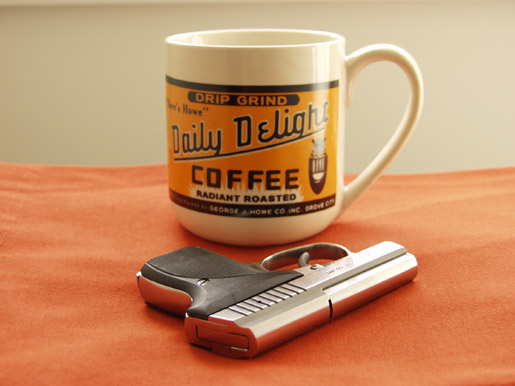
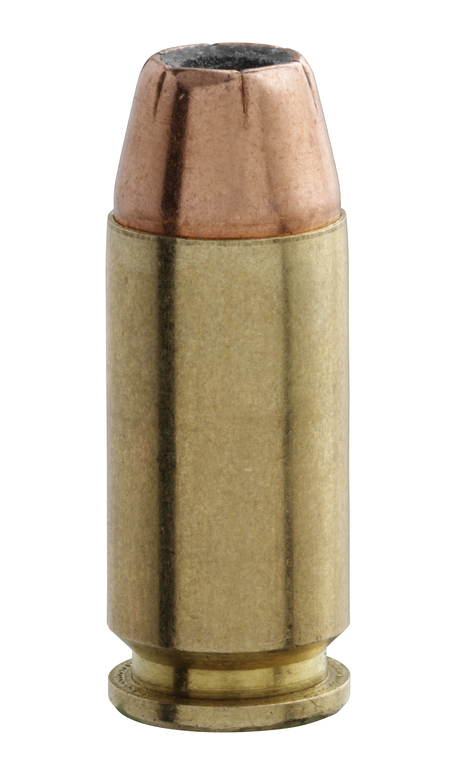
In general, hollow points are superior to ball ammo for defensive purposes. While it would be nice to make a tiny pistol that shoots everything with equal reliability, this feat is difficult to accomplish even in a large gun. Magazines start out with ammo preferences and will in time also develop ammo preferences. A magazine designed to accommodate ball ammo invites rim lock and other feed failures with hollow points due to excessive front to back slop, and a magazine that is regularly used with a particular type of ammunition will adapt to form a liking for that configuration just as shoes eventually adjust to a pair of feet.
At the time we began manufacturing the LWS .32 we were the only game in town on small .32ACP pistols and Winchester was the only viable option on hollow points. Kurt Canon of Glaser fame, with whom Larry regularly talked, quickly introduced the .32 Safety Slug in direct response to the LWS 32. The next kid on the block was Magsafe, followed years later respectively by Hydra Shok, Gold Dot, Corbon and Hornady.
The LWS .32 was designed around the original Silvertip cartridge. Initially, we tried to get the pistol to shoot everything, including ball ammo.
We quickly learned, however, that the problem of potential jams caused by random shuffling of rounds within a magazine because of excess play, now popularly referred to as rim lock, was something we had to take seriously. Rather than to have a pistol that marginally functioned with a variety of ammo, we opted to produce one that was maximally reliable with Silvertips – the only hollow point available to us at the time. For this reason, we provided spacers for our magazines.
WHY HOLLOW POINTS?
There are those sold on ball ammo, claiming that ball ammunition provides better penetration while hollow points are inconsistent on expansion. Although ball does offer excellent penetration, the streamlined configuration of ball provides the smallest temporary wound cavity. Air passes over the bullet with minimal resistance and turbulence. Air is not trapped and compressed within a cup to be released on impact (hopefully with bullet expansion), as it is with hollow point ammunition, nor is it vigorously directed away from the bullet, as is the case with the outside concave surface of semi-wadcutters. Both of these round types are shown in FBI ammo tests to produce a much greater temporary wound cavity in ballistic gelatin than ball. Logically, the shock value of temporary organ displacement translates into greater stopping power. Sanow and Marshall, in their controversial study of actual shootings, have placed the 60 grain .32 Silvertip on equal par with 230 grain .45 FMJ ball for stopping power. On the face of it, the Marshall/Sanow results seem ridiculous. A .45 caliber hole produced by a 230-grain bullet would appear to be far more effective in stopping power than a puny 60 grain hollow point that may or may not expand to .45 caliber.
Missing from the caliber equation is the jet stream turbulence produced by the configuration of the bullet. A .45 bullet that is streamlined to pass through air with the least resistance may not provide the best stopping power.
The trapped and compressed air within the hollow point bullet along with compressed gelatinous mass produces a hydraulic effect when the bullet strikes soft tissue. If things go right, the bullet cup is mushroomed out and the bullet expands to a larger caliber. The degree of penetration is reduced to the degree the bullet expands. The more expansion one gets, the less penetration one gets.
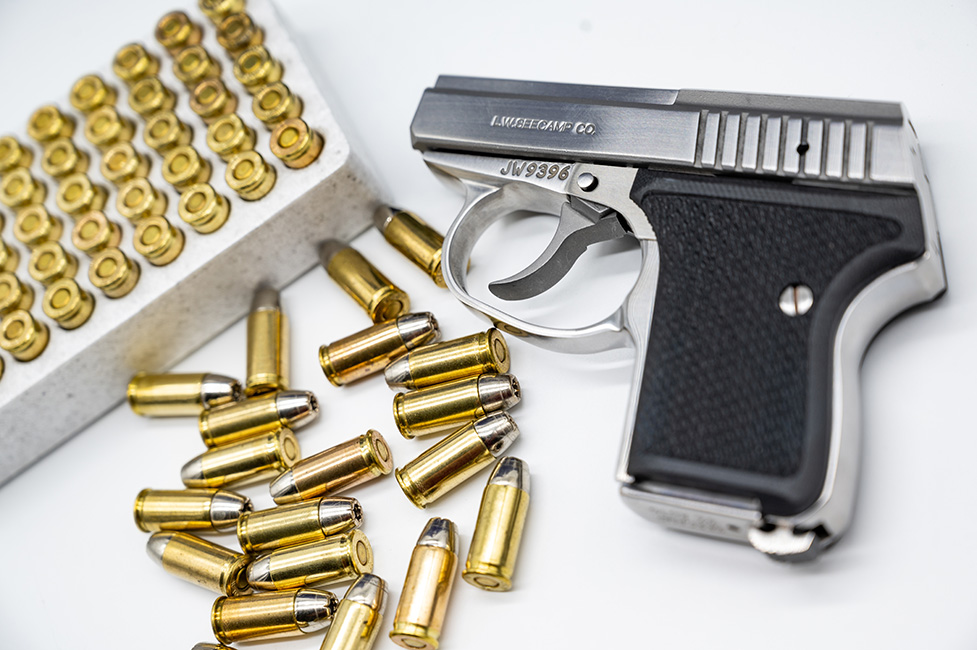
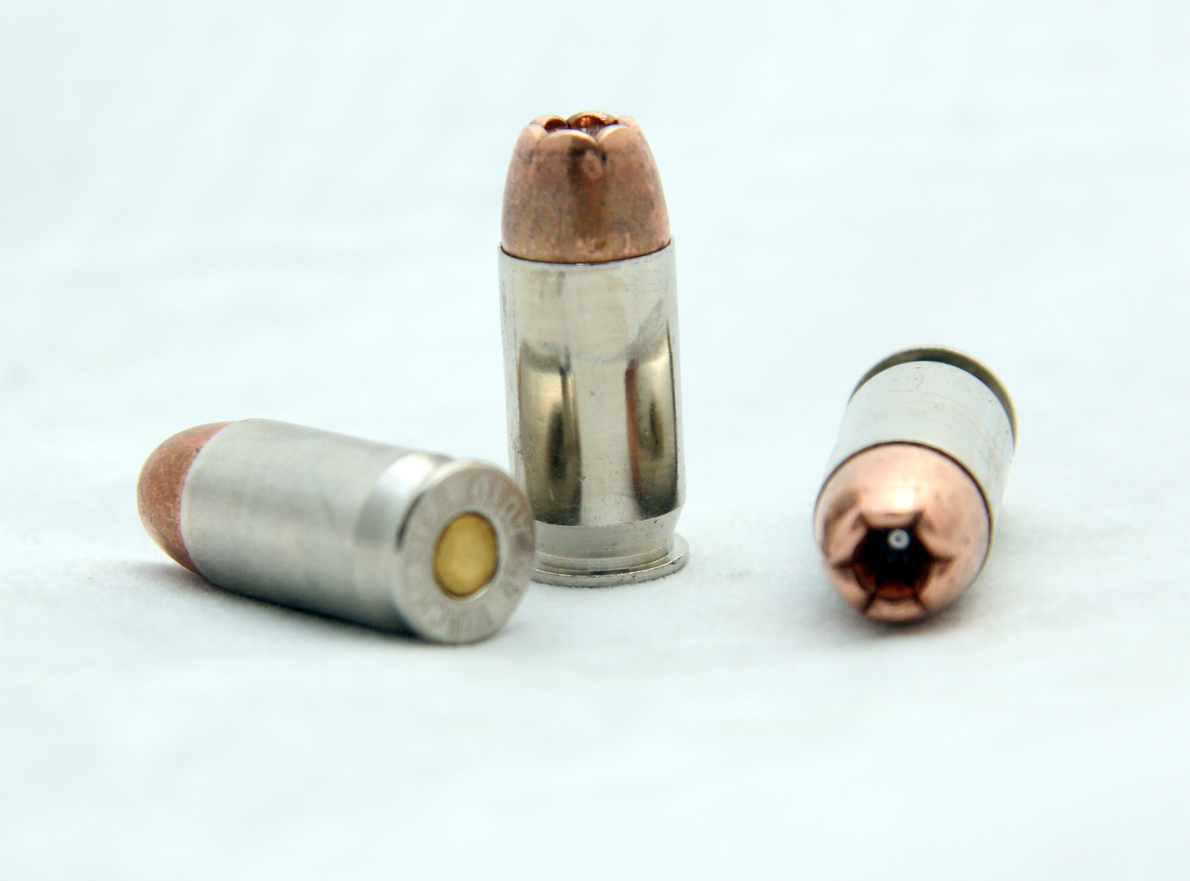
Regardless of whether the hollow point bullet expands or not, there is still turbulence produced by the cup. This turbulence is absent from the streamlined air foil design of ball ammo.
The hollow point cup creates a jet stream that in flesh or gelatin produces a temporary wound cavity of substantially greater diameter than the bullet. This cavity helps allow for bullet expansion since the pressure of the compressed material in the cup is far greater than is the pressure found outside the cup.
For this reason, hollow point ammo generally expands better in bare ballistic gelatin than it does, if at all, in clothed gelatin. When the cup strikes a less resilient surface than soft tissue, the pressures inside and outside the cup are closer to parity and expansion is limited. This almost seems to be the ideal situation. If a perpetrator is lightly clothed, the ammo will expand for maximum stopping power. On the other hand, if the perpetrator is heavily clothed and we are looking for better penetration, the ammo will sacrifice expansion for penetration.
AMMO INSPECTION, BOTHERSOME BUT NECESSARY?
In general, the quality of ammunition can be ascertained by visual inspection. Are the rounds the same length? Do the case mouths look consistent? If there is a crimp and is the degree of crimp uniform? Is there tearing of the case mouth on any of the rounds? Is there bullet bleed over at the case mouth? Do the bullets appear to be concentric with the case? Are any of the primers cracked or missing?
As to the defects that cannot be seen, the good news is that these are usually more annoying than anything else.
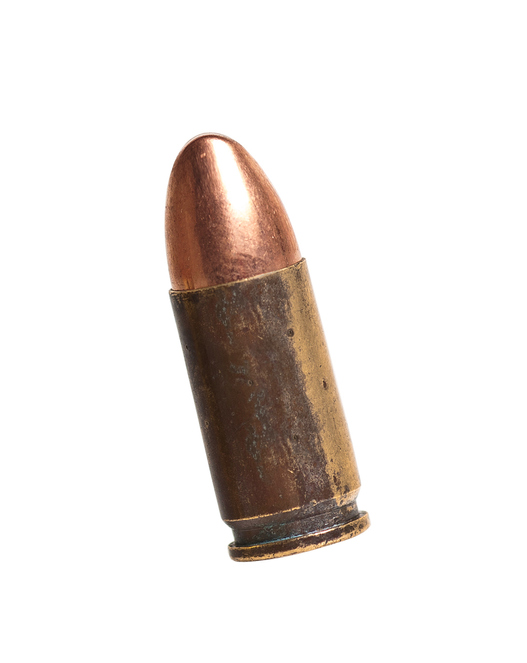

Even a severely reduced load will cycle the LWS 32 action. The barrel is too short for a bullet to get stuck ~ a primer alone will launch the bullet ~ and the gun is strong enough to survive a proof load. (I have had guns cycle and feed the next round on just a primer load.)
Occasionally a batch of ammo will exhibit a few primers that need a second trigger pull for ignition. The advantage of a D-A only pistol that fires from a full hammer down position over one that only fires from a partially cocked state is that a quick second pull is possible without retracting the slide. In almost all instances a second pull will set off the defective primer. Rarely is the primer a total dud.
Fired cases do not reliably reflect the force with which the primer was struck. Because one print is deeper than another doesn’t necessarily mean the deeper print was caused by a harder hit. (The depth of print in a fired case is not a true indicator of the force of the hit, since on explosion the primer usually mushrooms around the firing pin. In actuality, if there were no explosion, the print would almost always appear much shallower. It will be noted there are exceptions where the primer is flattened out against the breech face by the explosion or does not mushroom around the pin, giving the impression of a comparatively light hit.
One last note before moving on: Because a gun will cycle empties doesn’t automatically mean it will flawlessly function with live ammo. Nor does a gun that won’t reliably dry cycle necessarily indicate a gun that is prone to jam. There are too many other factors involved. (I once put hundreds of rounds without a bobble through a gun sent in for repair only to find out after numerous conversations with the customer that all of the jams happened during dry cycling.)
SHOT PLACEMENT TRUMPS ALL
Our advice would be to carry the largest caliber you can comfortably shoot and comfortably carry. That said, all studies show the advantage of caliber is very slight or negligible compared to the benefit of shot placement.
